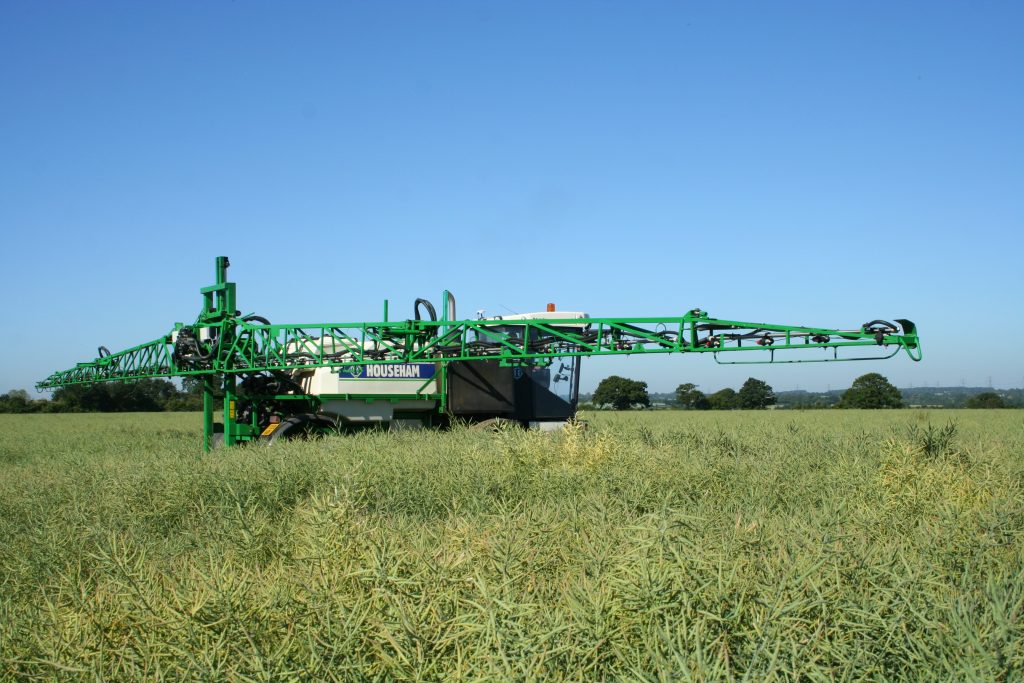Cleaning up with OSR harvest management
31st May 2018
Oilseed rape growers have been advised to make the most of pre-harvest glyphosate in controlling grass weeds this season as well as improving the timeliness and efficiency of their oilseed
Oilseed rape growers have been advised to make the most of pre-harvest glyphosate in controlling grass weeds this season as well as improving the timeliness and efficiency of their oilseed rape combining.
“Pre-harvest spraying is particularly valuable in reliably drying down today’s most productive thick-stemmed, well-branched rape crops that have profited from stay-green agronomy, noted Hutchinsons technical development director, Dr David Ellerton. “It’s also important in evening-up crops suffering the after-effects of pigeon-damaged growth in a very late spring like this season.
“At the same time, it’s an excellent way of dealing with the substantial grass weed populations that can easily escape notice in the base of OSR and go on to cause extra headaches and expense in following wheat crops; particularly where they’ve profited from this spring’s more open, slower-growing crops.”
Dr Ellerton accepts that pre-harvest OSR timing will be too late to prevent most black-grass and bromes setting viable seed. However, he stresses that, if done correctly, it can be very effective in dealing with later-maturing annuals like wild oats and annual meadow grass alongside problem perennial grasses and broadleaves. It can also improve stubble management ahead of winter wheat by giving more time for weed control and reducing trash burdens.
“There is absolutely no advantage in spraying before rapeseed moisture levels drop below 30%, either for weed control or harvest management,” insisted Monsanto technical specialist, Barrie Hunt. “Treating too early, as many people are tempted to do, will only slow down crop drying and can restrict both yield and oil content.
“Rather than bringing forward the harvest, it will just mean the crop takes longer to dry down. And as each day of seed filling lost is known to reduce seed yield by 1-2% and most oil is accumulated during the second half of the period, earlier-than-ideal spraying can seriously compromise output. Add in the extra impact of too many red seeds on sample quality and the cost of impatience can really add-up.”
Barrie Hunt points out that the optimum time for spraying well-structured modern OSR canopies can be 7-10 days later than the traditional timing for conventional crops grown at relatively high plant populations and bearing most of their yield on the main raceme.

Barrie Hunt.
He urges growers to apply the long-established Roundup spray timing guidelines to the area of their canopies bearing the lion’s share of the yield rather than the main raceme, noting that the pod shatter resistance carried by so many modern varieties will reduce the risk of seed shedding from riper pods higher up the plant.
“For the most reliable activity under the particular challenges of heavily-waxed, senescing canopies and today’s weather uncertainty, you really need to use a modern glyphosate like Roundup Flex,” said Barrie Hunt. “You will find its proven dry weather activity, great rainfastness and valuable drift minimising properties of real value here. All the more so with the markedly less good performance we’ve seen from the alternative glyphosate formulations that have replaced the withdrawn ethoxylated tallow amines (ETAs) this season.”
Alongside the most reliable glyphosates, David Ellerton is adamant of the need for the best spraying practice to target both rape crops and their weed understoreys.
“Go for medium-coarse sprays, together with water volumes, pressures and boom and nozzle settings that give thorough canopy coverage and penetration,” he recommended. “Keep your spraying speed down and, in hot weather, spray early in the day for the most consistent uptake.
“Alongside pod shatter resistance, pod sealants like Zip Pod, can also be valuable in reducing seed losses; especially if applied at their ideal timing, ahead of pre-harvest glyphosate.”
Roundup OSR harvest management timing guide
- Select areas of the field representative of the crop.
- In each area pick 20 pods from the part of the canopy carrying the bulk of the yield.
- If at least two thirds of the seeds have changed from green to brown in at least 15 pods
the earliest stage for spraying has been reached. - Only start combining once stems as well as pods are fully fit which may be up to
3 weeks after spraying under some conditions.

